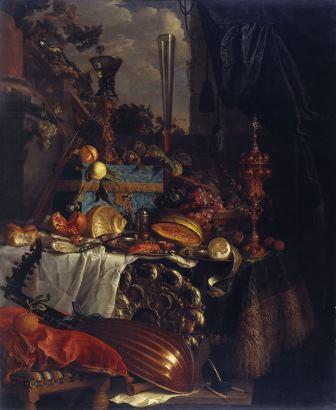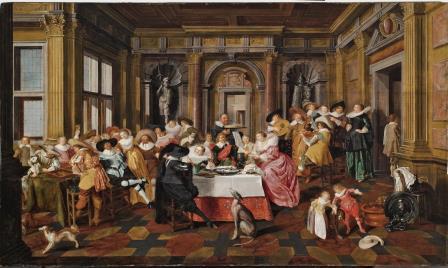Recommendation
In a letter dated 16 March 2017 the Minister of Education, Culture and Science (hereinafter referred to as the Minister) asked the Restitutions Committee (hereinafter referred to as the Committee) for advice about the application for the restitution of two paintings from the Netherlands Art Property Collection (hereinafter referred to as the NK collection), namely:
– NK 2584, Dirck Franchoisz Hals and Dirck van Delen, Banquet Scene with Musicians and Shuffle Board Players in an Interior, currently on loan to the Frans Hals Museum in Haarlem;
– NK 2711, Jan Davidsz de Heem, Still Life with Glass, Glass Stand and Musical Instruments, currently on loan to the Centraal Museum, Utrecht.
The restitution application was submitted to the Minister in a letter of 30 January 2017 from the authorized representative of:
AA of XX, BB of XX, CC of XX, DD of XX, and EE, of XX
(hereinafter jointly referred to as the Applicants).
The Applicants stated that they are the grandchildren or great-grandchildren of Jacob Lierens (1877-1949), who lost possession of the two paintings involuntarily as a result of circumstances directly connected with the Nazi regime The Applicants are represented by J. Palmer and N. Parke-Taylor, both of Mondex Corporation, Canada, and assisted by G.J.T.M. van den Bergh and M. Visser, lawyers of Amsterdam. In this case the Minister had herself represented by the Netherlands Cultural Heritage Agency (RCE).

